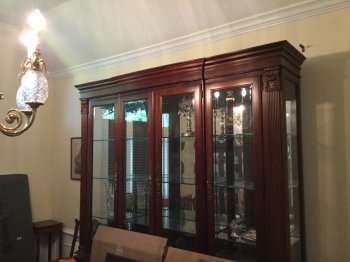People have been offering advice and I appreciate it and I am taking the advice, but I still have questions that haven’t been answered.
Actually, I suspect that you have ideas that you wish to have reinforced, rather than questions that cannot be answered.
Oh ok so how do you judge the build quality? And I am not sure why we keep ending up talking about design. IKEA makes well-designed furniture yet it’s cheap particle board. My local furniture store makes furniture that appears to be well designed, yet it’s $1500 for cheap wood. So you would go to a furniture store and say well jeez this table sure does look nice - the saleswoman says oh yes and it’s made of REAL WOOD and off you go? If so you just got ripped off.
Firstly, not all IKEA furniture is particle board; some - obviously, the more expensive - are made from solid wood. Research their sites, brochures, and shops. Learn to tell the difference.
Ask questions.
Secondly, you ask, and I assume, you are then able to remember and learn and can apply - or use - the information you have acquired to inform the questions you ask elsewhere.
Is it rocket science to go into a furniture that is supposed to be good (ask, check online, read reviews) and ask them to show you every - for example desk or writing table, they have.
Ask: What is the difference between them? Which is considered to be better? Why? How does the craftsmanship differ? What about the wood - quality, age, natural or veneer or particle? is it handmade or machine made?
Different quality steel for sure. And the car analogy is not great anyway, but certainly you can look at the Ferrari and say well the seats are handmade leather from free-range gluten free cows or whatever and the engine is built so that it can achieve this speed in this amount of time, etc etc. and not a single one of these items has anything to do with design.
I beg to differ.
Every single one of those things has to do with good design.
Good design is a fusion of form and function so that the product in question does what it is supposed to do, but is both stylish and classy.
Ok. Let’s say you want to buy a computer. You come on a forum and ask about what size RAM, processor speed, and whatever and we say go to the computer store and ask the sales guy. How is that helpful if you don’t even understand the difference in these items, or how much they typically cost? You’d get fleeced. “Oh you need 16 GB of RAM - that’ll be $800 for the high quality stuff”.
Sigh:
Do you think I bought a computer on a whim? Seriously?
Or without doing sufficient research or due diligence?
Before I bought my first computer, in the 1990s, when I was a postgrad, I had asked someone who knew about - and had worked with - computers to accompany me to examine every computer that I looked at (I bought used, the first two occasions) - yes, the process took weeks - my mother drove us to these places; he examined every computer - and advised me on each - no, that is insufficient memory, that guy is asking too much, this will be obsolete, and so on. I took his advice.
Others advised me - you wear glasses, make sure you get a decent screen. Yet others made suggestions as to what someone who did what I did - a teacher and researcher - would need and should look out for.
By the end of that process, - which lasted six weeks or so - I had some idea of what I should buy and what sort of price I should expect to pay.
I do the same for white goods - drive to every reputable (and reputable matters) getting observations on brands, and quality, and price. I don't always take such advice, but one can aggregate it - and factor in one's own preferences, as well.
And, I did the same for when I switched to Apple - that research took around five months.
And a final aside: The "best walnut on earth" will not be super-cheap. Ever.



